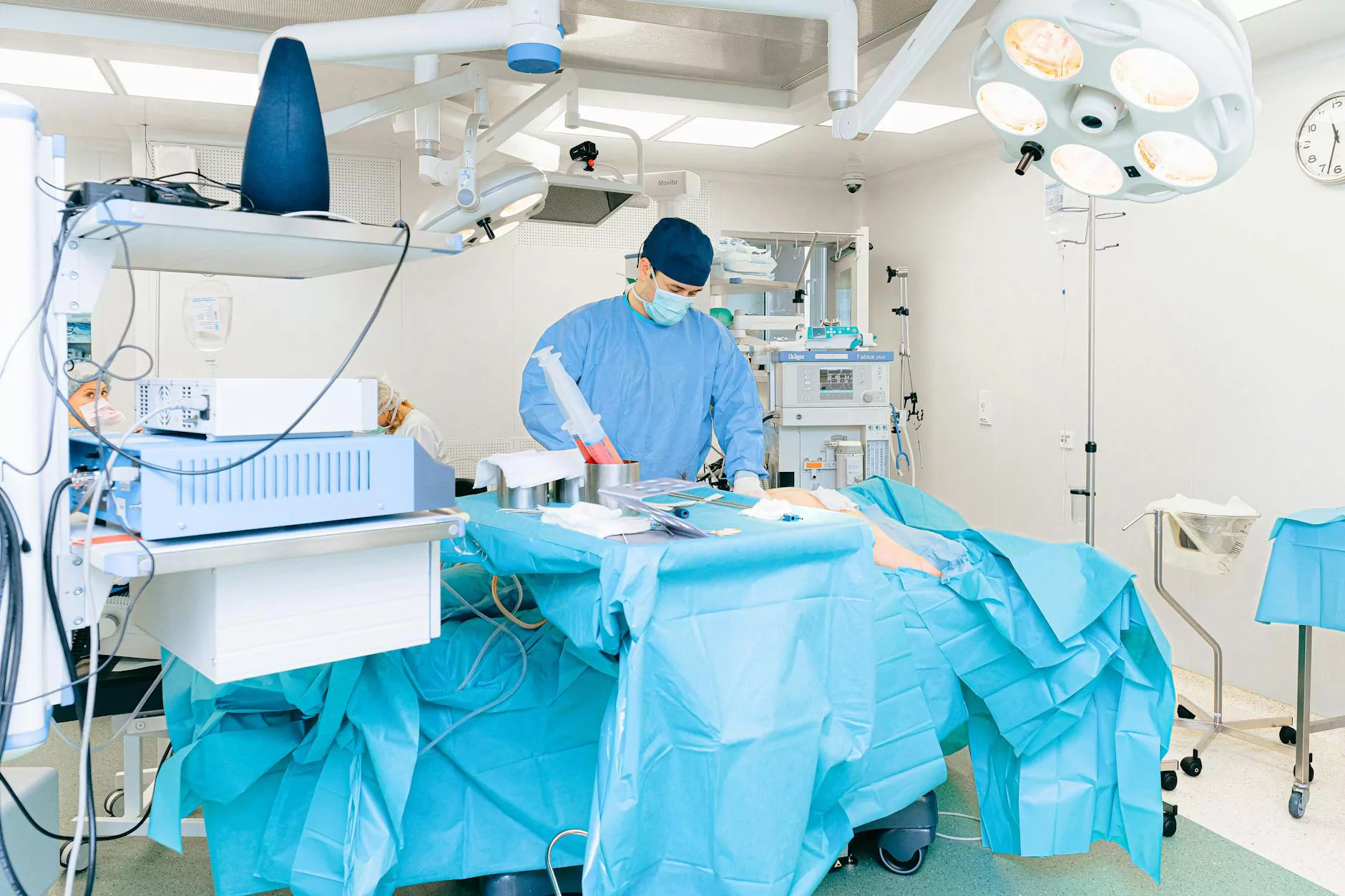Laparoscopic Unilateral Salpingo Oophorectomy: A Comprehensive Guide

In the realm of modern medicine, surgical advancements have paved the way for more refined and less invasive procedures. One such procedure is the laparoscopic unilateral salpingo oophorectomy, which plays a crucial role in the treatment of various gynecological conditions. This article aims to provide an in-depth understanding of this surgical method, its benefits, risks, and recovery process.
What is a Laparoscopic Unilateral Salpingo Oophorectomy?
A laparoscopic unilateral salpingo oophorectomy is defined as a minimally invasive surgical technique used to remove one ovary and one fallopian tube from a patient's body. This approach utilizes a laparoscope – a thin, lighted tube equipped with a camera – allowing surgeons to visualize the internal organs without the need for large incisions.
The Indications for a Laparoscopic Unilateral Salpingo Oophorectomy
This procedure is commonly indicated in cases such as:
- Ovarian Cysts: Large or symptomatic ovarian cysts that cause discomfort.
- Ovarian Cancer: Malignancies affecting the ovary that require surgical intervention.
- Ectopic Pregnancies: When a fertilized egg implants outside the uterus, often in the fallopian tube.
- Endometriosis: A condition where uterine tissue grows outside the uterus, leading to pain and other complications.
The Advantages of Laparoscopic Surgery
The laparoscopic unilateral salpingo oophorectomy offers several advantages over traditional open surgery, including:
- Reduced Recovery Time: Patients often experience a shorter hospital stay and quicker recovery.
- Less Pain: Minimally invasive techniques typically lead to reduced postoperative pain.
- Smaller Scars: The small incisions used in laparoscopic surgery result in minimal scarring.
- Lower Risk of Infection: Smaller wounds lead to a diminished risk of post-operative infections.
How the Procedure is Conducted
The laparoscopic unilateral salpingo oophorectomy procedure is performed under general anesthesia. Here are the typical steps involved:
- Anesthesia: The patient is placed under general anesthesia to ensure comfort and immobility.
- Incision Creation: The surgeon makes a small incision, usually around the navel, to insert the laparoscope.
- Accessing the Abdomen: Carbon dioxide gas is introduced into the abdominal cavity to expand it, allowing better visibility and access.
- Removal of Affected Ovary and Tube: Using specialized instruments, the surgeon carefully detaches the targeted ovary and fallopian tube and removes them through the incision.
- Closing the Incision: After the removal, the instruments are taken out, the gas is expelled, and the incision is closed with sutures or adhesive strips.
Potential Risks and Complications
Like any surgical procedure, a laparoscopic unilateral salpingo oophorectomy entails certain risks. Possible complications include:
- Bleeding: Though rare, some patients may experience excessive bleeding during or after the procedure.
- Infection: As with any surgical intervention, the risk of infection exists.
- Damage to Surrounding Organs: There is a slight risk of injury to nearby organs or structures during the procedure.
- Anesthetic Reactions: Some individuals may have adverse reactions to anesthesia.
Post-Operative Care and Recovery
Following the laparoscopic unilateral salpingo oophorectomy, proper post-operative care is crucial for a smooth recovery. Patients can expect:
- Pain Management: Pain relief medications will be prescribed to manage discomfort.
- Activity Restrictions: Patients are usually advised to avoid strenuous activities for a few weeks.
- Follow-Up Appointments: Routine follow-ups will be scheduled to monitor healing and assess any ongoing concerns.
The Impact on Women's Health
Understanding the implications of undergoing a laparoscopic unilateral salpingo oophorectomy is essential for women. While this procedure can alleviate symptoms and treat conditions effectively, it also poses significant considerations regarding hormonal balance and reproductive health.
During the hormonal cycle, the ovaries produce vital hormones, and their removal can influence hormonal levels. Women who have one ovary removed continue to produce hormones, though they may experience changes in their menstrual cycle. It’s critical for patients to discuss these hormonal implications with their healthcare provider.
Choosing the Right Surgeon
Choosing a skilled and experienced surgeon for a laparoscopic unilateral salpingo oophorectomy can directly impact procedural success and recovery. Here are some tips for selecting an appropriate healthcare provider:
- Credentials and Experience: Look for board-certified obstetricians and gynecologists with specialized training in laparoscopic procedures.
- Hospital Affiliations: Ensure that the surgeon has privileges at a reputable hospital that has the necessary facilities for laparoscopy.
- Patient Testimonials: Research and read reviews from previous patients to gauge their satisfaction and outcomes.
- Consultation Visits: Schedule meetings to discuss your concerns, ask questions, and assess the surgeon's communication style.
Conclusion: Embracing Surgical Advances
The laparoscopic unilateral salpingo oophorectomy is an advanced surgical procedure that embodies the ongoing evolution of women's healthcare. It is essential for women experiencing gynecological issues to understand their options and the surgical choices available to them. With the right information and support from healthcare professionals, patients can confidently navigate their surgical journey, promoting better outcomes and improving overall health.
For further information and to consult with experienced gynecologists, visit drseckin.com, where you can find dedicated professionals committed to providing optimal surgical care.









